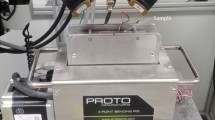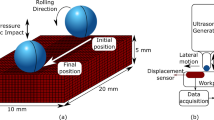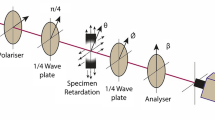Abstract
Methods for determination of the crack opening stress intensity factor (Kop) and for estimation of the effective stress intensity factor range (ΔKeff) are evaluated for crack growth test data of aluminum alloys. Three methods of determining Kop, visual measurement, ASTM offset compliance method, and the neural network method proposed by Kang and Song, and three methods of estimating ΔKeff, conventional, the 2/P10 and 2/PI methods proposed by Donald and Paris, are compared in a quantitative manner by using evaluation criteria. For all Kop determination methods discussed, the 2/PI method of estimating ΔKeff provides good results. The neural network method of determining Kop provides good correlation of crack growth data. It is recommended to use 2/PI estimation with the neural Kop determination method. The ASTM offset method used in conjunction with 2/PI estimation shows a possibility of successful application. It is desired to improve the ASTM method.
Similar content being viewed by others
References
ASTM E647-99, 2001, Standard Test Method for Measurement of Fatigue Crack Growth Rates, In Annual Book of ASTM Standards, Vol. 03.01.
Bruzzi, M. S. and McHugh, P. E., 2003, “Application of Closure Based Fatigue Modelling Methodology to Al-SiC MMCs,”Int J Fatigue, Vol. 25, pp. 577–584.
Choi, H. C, 2000, “A Study on the Determina- tion of Closing Level for Finite Element Analysis of Fatigue Crack Closure,”KSME International Journal, Vol. 14, pp. 401–407.
Chen, D. L., Weiss, B. and Stickler, R., 1996, “Contribution of the Cyclic Loading Portion below the Opening Load to Fatigue Crack Growth,”Matererial Science and Engineering A, Vol.208, pp. 181–187.
Donald, J. K., 1997, “Introducing the Compliance Ratio Concept for Determining Effective Stress Intensity,”Int J Fatigue, Vol. 19, pp. s191-s195.
Donald, J. K. and Paris, P. C, 1999, “An Evaluation of ΔKeff Estimation Procedure on 6061-T6 and 2024-T351 Aluminum Alloys,”Int J Fatigue, Vol. 21, pp. s47-s57.
Elber, W., 1971, “The Significance of Fatigue Crack Closure. In: Damage Tolerance in Aircraft Structures,” ASTM STP 486, Philadelphia (PA), American Society for Testing and Materials, pp. 230–242.
Kikukawa, M., Jono, M. and Tanaka, K., 1976, “Fatigue Crack Closure Behavior at Low Stress Intensity Levels,”In Proc. ICM 2, pp. 716–720.
Kang, J. Y. and Song, J. H, 1998, “Neural Network Applications in Determining the Fatigue Crack Opening Load,”Int J Fatigue, Vol. 20, pp. 57–69.
Kim, J. H. and Song, J. H., 1992, “Crack Growth and Closure Behaviour of Surface Cracks under Axial Loading,”Fat Fract Engng Mater Struct, Vol. 15, pp. 477–489.
Kim, C. Y. and Song, J. H., 1993, “An Automated Procedure for Determining Crack Opening Level from Differential Displacement Signal Data.”Int J Fatigue, Vol. 15. pp. 301–309.
Kim, C. Y. and Song, J. H., 1994, “Fatigue Crack Closure and Growth Behavior under Random Loading,”Engng Fract Mech, Vol. 49, pp. 105–120.
Kujawski, D., 2001, “Enhanced Model of Partial Crack Closure for Correlation of R-ratio Effects in Aluminum Alloys,”Int J Fatigue, Vol. 23, pp. 95–102.
Lee, S. Y. and Song, J. H., 2000, “Crack Closure and Growth Behavior of Physically Short Fatigue Cracks under Random Loading,”Engng Fract Mech, Vol. 66, pp. 321–346.
Lee, O.S. and Chen, Z. W., 1999, “A New Crack Growth Model for Life Prediction Under Random Loading,”KSME International Journal, Vol. 13, pp. 905–911.
Paris, P. C. Tada, H. and Donald, J. K., 1999, “Service Load Fatigue Damage-a Historical Perspective,”Int J Fatigue, Vol.21, pp. s35-s46.
Author information
Authors and Affiliations
Corresponding author
Rights and permissions
About this article
Cite this article
Kang, JY., Song, JH., Koo, JS. et al. A comparative evaluation of Kop determination and ΔKeff estimation methods. KSME International Journal 18, 961–971 (2004). https://doi.org/10.1007/BF02990868
Received:
Revised:
Published:
Issue Date:
DOI: https://doi.org/10.1007/BF02990868




